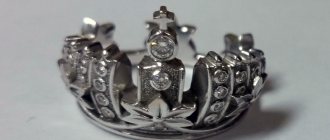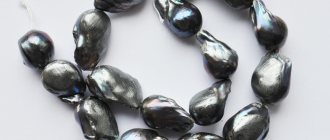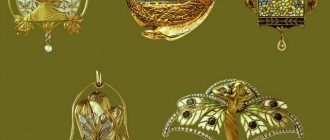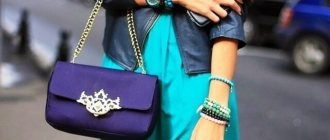Quote from Maya_Peshkova's message
Read in full In your quotation book or community!
,classicism,empire
Style is more than just a sense of wardrobe choice. The style reflects the stages of development of history in art. Simply put, it is the sum of visual techniques of a certain time and direction.
Styles replaced each other - sometimes thanks to the powers that be (Louis XV, Napoleon Bonaparte, Queen Victoria, Ludwig of Bavaria), and sometimes simply due to a decline in public interest. Styles that are centuries distant from us are considered to be “historical” (Gothic, Renaissance, Baroque, Classicism, Romanticism). And those that are 70 years or closer away from us can perhaps be considered “current” styles (cubism, primitivism, steampunk, and the like).
When describing the characteristics of a style, the following concepts are used: composition, line, color scheme, materials; in historical styles - ornament and its elements. Speaking of historical styles: “sometimes they come back” in the form of neo-styles - sometimes with great success (after all, technologies are improving). A striking example is the same Gothic. By the way, styles received their names very, very “retroactively”, often different in different countries.
For example, in the West (in England and countries that were influenced by the United Kingdom) the following classification of jewelry styles is accepted:
- Georgian (1714-1837) - “Georgian style” - the era of the reign of Kings George 1, 2, 3 and 4
- Victorian (1837-1901) - “Victorian style” - the era of the reign of Queen Victoria (1837-1890) the Romantic Period (1837-1861) (“romantic” period)
- the Grand Period (1861-1880) (“grand”)
- the Aesthetic Period (1880-1901)
So, looking back with hope at historical cinema (“Elizabeth: The Golden Age”, “Pirates of the Caribbean”, “Midshipmen” and the like), let’s try to start with the main historical styles - Baroque, Rococo, Classicism and Empire.
According to the Western classification, all these styles practically fit into the Georgian era that was dominant at that time.
Baroque style and its jewelry heritage
The picturesque and majestic Baroque style - “bizarre”, “irregular” in translation from Portuguese - arose in the 16th century in Italy. “Film Guides” on style - “Farinelli”, “Girl with a Pearl Earring”. The hallmark of this style is funny jewelry with irregularly shaped “baroque” sea pearls.
In relation to the jewelry art of this era, it is customary to distinguish Early Baroque (1600-1660), Late Baroque (1660-1725), and Rococo (1725-1775). In this article we consider Rococo as an independent style.
The reasons for the appearance and roots of this style are perhaps the following: the papacy decided to hit the Spaniards and French with the club of art (in a monumental and magnificent baroque design), who were then dictating the terms of politics to the Italians. The nobility of Italy compensated for the loss of power by demonstrating trumpeting luxury (unacceptable within the framework of the previous style - the Renaissance). Baroque is a riot of optimism, subordinated to symmetry.
Baroque features include:
- clear design (when the mass of convex small elements is arranged into a clearly readable symmetrical silhouette)
- rhythmic composition (subordination of elements to each other and to the artist’s entire plan)
- clear convex reliefs
- “dense” floral ornament, brightness of color
Baroque style jewelry
In Baroque jewelry, the most typical elements were gold (less often silver), multi-colored enamels and bright precious stones or large pearls. Marine pearls were in fashion, with unusual, including elongated shapes. Later, this type of pearl was given the name “Baroque pearl”.
Representatives of the nobility wore long multi-row strands of pearls and busy “Girandole” earrings (English: Girandole or Chandelier – (chandelier) earrings) with three pearl pendants.
Large or small brooches were used to decorate the neckline of the bodice and waist. Pearls and stones were sewn onto the dress along with ribbons.
Openwork brooches-slavages were attached to a neckband or on a deep neckline. Large brooches-bouquets or intertwined branches were typical. The brooch-bow with a pendant will be called the “brooch de Sevigne” (portrait above)
Clothes and shoes were decorated with precious buckles.
Decorated clothes and cameos
Roman Baroque motifs in the Bvlgari high jewelry collection
Bvlgari decided to celebrate their exit from quarantine like true Italians - with a festive flourish, the shimmer of colorful precious stones and the shine of precious metals. We present to you a new collection of high jewelry - Barocko, the name of which speaks for itself. The jewelry and watchmaking house was founded in Rome back in 1884, but even after 130 years, the creative minds at Bvlgari continue to draw inspiration from the culture of the Eternal City. This time we have an interpretation of the motifs of the legendary Roman Baroque - forget about minimalism!
Cabochon Exuberance Ring
©Antonio Barrella
Take a closer look at each piece of jewelry in the line - there are reminders of the sculptural fountain of the Four Rivers by Gian Lorenzo Bernini, and variations on the theme of the marble bas-reliefs of the Basilica of St. Agnes, designed by Francesco Borromini... These jewelry, created under the strict guidance of the creative director of the House, Lucia Silvestri, can replace a tour of the sights of Baroque Rome. Let's remember the school history course - the main task of baroque is to convey sublimity and elegant solemnity. Long ago, colorless diamonds began to lose their power over the jewelry market, so the Barocko collection copes with this by bringing rare multi-colored gemstones from all over the world. It took Lucia years to find some of them!
Cabochon Exuberance Earrings
Cabochon Exuberance necklace
One of the main treasures of the collection is the Cabochon Exuberance necklace, inspired by the Farnese Gardens complex on the Palatino hill. Framed in yellow gold and pure diamonds, massive cabochons of aquamarines, rubellites and tanzanites sit side by side. Bvlgari designers made a bet on carat when creating almost every piece of jewelry. Look at the Lady Rubellite sautoir. The first thing we see is not delicate pavé diamonds or even cultured pearls, but a massive 60-carat pear-shaped rubellite.
Lady Rubellite sautoir
The most “dessert” decoration is the Lady Arabesque necklace, which all fans of Baroque architectural motifs will certainly fall in love with. Rose gold swirls are accented with teardrop diamonds, pink and purple Sri Lankan sapphires, precious Paraiba tourmalines and emeralds. The color palette of the necklace is shades of purple, green and gold, so it could easily be confused with a caramel treat, which, by the way, took more than a thousand hours to create. The shape of the decoration - “bib” - refers to the historical codes of Bvlgari.
Lady Arabesque earrings
Another item from the Barocko line that is worthy of display in a museum is the Rosso Caravaggio necklace, on which the Maison’s craftsmen worked for more than 1,500 hours. It already feels more traditional Bvlgari moods - a kind of “old school”. Instead of a riot of colors, there is the restraint of platinum and the pure radiance of diamonds. The necklace features a rare 10-carat cushion-cut ruby that was found in Mozambique. The jewelry keeps a secret that only its owner knows about: it is equipped with a special mechanism that allows you to get two entire removable necklaces instead of one massive one.
Ring Ruby Drapery
Rococo style - French sophistication
To the ear, Rococo is similar to Baroque, but in appearance it has distinct differences. The birthplace of Rococo (or Rocaille) is France at the beginning of the 18th century (the film “Farewell My Queen” about Marie Antoinette (2012) is a film guide to this style).
The roots of this style are purely French: a longing for intimacy. Unlike the Italians, the French did not need the illusion of power; Rocaille (translated as “shell”) is a chamber style.
While preserving the picturesqueness of the Baroque, Rocaille moved away from color brightness, scale, and symmetry. The lines became smooth
Jewelry from Rococo times
Rococo features are asymmetry, smoothness, pastel colors, sophistication and intimacy. Compared to the jewelry art of Baroque times, in the Rococo era jewelry became more “frivolous” and airy. It seems as if the motifs of the jewelry simply do not fit into the given form and are trying to break out of there.
Jewelers are switching to the “brilliant” cut of diamonds (the author is considered to be the Venetian Vincenzo Peruzzi). The diamond excels. Now it is fashionable to set it not in gold, but in silver, using the pave setting method (when the product is studded with diamonds, like a bagel with poppy seeds). Parures (sets of jewelry similar in material, work, design) are becoming fashionable. Brioles earrings are popular - with movably attached long pendants - “drops” and “stars”. They create precious “bouquets”—the 18th century is called the “age of flowers and diamonds.”
The ladies' hairstyles are very intricate. Movable openwork pins are in fashion - “ziternadel” (from German zittern - tremble and nadel - pin). Asymmetrical aigrettes (feathered headdress, from the Latin - Egretta, a genus of white herons), graceful feathers, and sometimes bright butterflies. “Port bouquets” (jewelry “vases” for bouquets of fresh flowers) appeared. Men did not lag behind, decorating various orders, buckles of clothes and shoes, sword handles, and many key chains with diamonds.
But the ornate rocaille already contained the seeds of future classicism. For example, medallions with enamel miniatures; round or oval, discreet decor.
Standards of female beauty in history: 18th century. Rococo
Hello, beauticians!
I propose to continue immersing yourself in the atmosphere of aristocratic luxury and get acquainted with European fashion and ideas about beauty of the 18th century.
In the previous post, our focus was on France, since it was she who set the fashion trends in Europe in the 17th century. In the 18th century, the influence of the French on European fashion continued. It is natural that it was there that a new artistic style was born - Rococo, which began to take shape during the regency of Philippe d'Orléans (1715-1723). The name "rococo" most likely comes from the French word rocaille, meaning "shell-shaped decoration", "decorative shell". The Rococo style was distinguished by elegant decorativeness, fragility, sophistication, sensuality and some mannerism. This was the last period of dominance of aristocratic fashion, which ended with the beginning of the French Revolution and the fall of absolutism. France continued to occupy a leading position in the luxury goods trade, with Lyon being a center for silk weaving and embroidery, and Paris a center for textile haberdashery and accessories. Regular fashion seasons created a demand for certain colors and designs, and residents of the provinces learned about the latest trends from fashion magazines. Only the poorest segments of the population did not follow the latest “trends”. The fashion was mainly set by the king's extravagant mistresses, in particular the educated Marquise de Pompadour and her no less sophisticated “colleague” Madame DuBarry.
For women, a graceful silhouette, narrow shoulders, a very thin waist, and a rounded hip line were considered especially beautiful. Costumes and cosmetics became practically undifferentiated by age: powdered, made up, wearing wigs - everyone looked equally youthful. Moreover, in Rococo both sexes “mix”, and men’s dress gravitates towards women’s; femininity, fragility, and capriciousness dominate in it: a man, having ceased to be a warrior, becomes a gentleman. The 18th century is an era of unbridled enjoyment of life, an endless pursuit of pleasure. The art of the declining noble society was refined, calling for pleasure, for sensual joys. It became an adornment to the idle life of the carefree and pampered nobility.
Gallant Age
The 18th century is often referred to as the "gallant century". Culture in the field of relations between the sexes was reflected in the form of the proclamation of woman as the ruler in all areas, in the form of her unconditional cult. In his famous book “Woman in the 18th Century.” The Goncourt brothers perfectly described this golden age of women: “ In the era between 1700 and 1789.
a woman is not only a unique spring that sets everything in motion. She seems to be a force of the highest order, a queen in the realm of thought. She is an idea placed at the top of society, to which all eyes are turned and all hearts are directed. She is an idol before which people bow their knees, an icon to which they pray. All illusions and prayers, all dreams and ecstasies of religion are directed towards a woman. A woman produces what religion usually produces: she fills minds and hearts .
These words of Goncourt about France apply to all European countries.
Woman reigned everywhere, the laws of gallantry reigned everywhere. The difference here is only in the greater or less refinement of the forms. In other countries these forms are only cruder and more clumsy than in France, as is always the case with copies. The essence of gallantry lies in the fact that a woman, as an instrument of pleasure, as a living embodiment of sensuality, has ascended the throne. She is worshiped as the personification of voluptuousness. One of the greatest masters of gallantry, Count Tilly, says in his memoirs: “ In France it is necessary to use a lot of diligence, dexterity, outward sincerity, play and art in order to defeat a woman who is worth defeating.
We have to comply with formalities, each of which is equally important and equally obligatory. But there is almost always an opportunity to enjoy victory, unless the attacker is a fool, and the woman who was attacked is not the personification of virtue .”
If a lady hesitates, it is only because she wants to increase the pleasure of the man seeking her favor. A man removes every obstacle from a woman's path. Her every desire becomes an order for him, her slightest whim becomes a law. The woman is given the first place; the way is given to her so that she can walk comfortably. Everyone considers it an honor to give up their own rights and benefits in favor of her. The behavior of the man just described must, however, have an erotic note, which distinguishes the gallant age from all other eras. Essentially, gallantry, the chivalrous attitude of the stronger towards the weaker is not new in gender relations. In the era of gallantry, this chivalrous attitude, however, is brought to the point of ridiculousness, and, moreover, exclusively in an erotic direction. A man treats a woman in a chivalrous manner, not only as a weaker creature, but as a precious instrument of the most desired pleasure embodied in her.
All this inevitably leads to a change in moral views. “Morality has brought all the evil into love,” said Retief de la Bretonne. And therefore, morality was neglected, while vice now receives social sanction (not official, of course). These are, in general terms, the laws of absolutist culture and their specific reflection in the relationship between a man and a woman. One paradox needs to be emphasized here: the century of female dominance is never the century of the true rise of women. In the era of absolutism, man and woman did not stand side by side as equal individuals. The century, which saw in a woman’s infidelity the most desirable piquancy that could only increase sexual pleasure, at the same time granted a man the right to subject his wife, on the basis of mere suspicion of treason, to the strictest punishment - life imprisonment in a monastery.
Clothing and jewelry
The Rococo era is a time of unsurpassed style and exquisite silhouette of elegant dresses. At the beginning of the 18th century, women's clothing moved away from the ceremony, formality and stiffness of the late Baroque. The woman in Rococo costume resembled an elegant porcelain figurine. The silhouette of the suit in bright and light colors was very feminine and emphasized the tenderness of fragile shoulders, thin waist and roundness of hips. A heavy dress gives way to a light and soft suit. And although his means of expression are still typically baroque, the trends of the new era can already be discerned in his decorative decoration.
In the creations of this period, the influence of the art of the Far East, Delft faience, and original Chinese furniture is very strong. And silk fabrics reflect all these influences. They are immensely expensive, since the raw materials for them were brought from distant countries, and also because these fabrics were pierced with gold and silver threads, not counterfeit, but made of precious metals. Only a select few could afford such luxury. Costs for a lady's dress were calculated mainly in the price of materials, and they changed more often than dress styles. Basically, it was the materials that dictated the changes in clothing. The Rococo era became a time of fashion for printed silk fabric and embroidered silk and chintz. In contrast to French patterns, English fabrics and printed materials were decorated with natural motifs, reflecting the growing interest in botany as a result of the importation of new plants from other countries. The fashion for patterns and fabrics changed frequently: in high society it was hardly enough for one season, then such outfits became the lot of the poorer classes, recut and sold.
At the beginning of this period, a special piece of outerwear called contouche appeared in women's fashion. It was a formal outer garment, sewn at the back of the throat to an underdress that flowed freely down in rich folds, without the usual narrowing at the waist. If the kontus was short, barely reaching the knees, then it was worn as a home suit; in this form it was especially common in Germany. Around 1730, made of expensive silk, it was one of the most formal court clothes. In the 18th century Many simple, everyday types of clothing appeared among the nobility. Among other things - negligee (French - casual) - clothing for home, morning receptions and walks.
The wide skirt and bodice of the underdress were reinforced with whalebone. There was such a great demand for this material that later a company was founded in Holland (1772) that supplied whalebone to all European countries. The waist is pulled tightly into the corset, and the hips are enormously enlarged by the pannier - a frame skirt on hoops made of whalebone or metal plates. In France, paniers were made from willow twigs or whalebone, laid with rollers and layers of quilted fabric. The shape of the pannier was varied: oval, round, cone-shaped. The widest bell-shaped ones were worn by aristocrats. Women from the bourgeois environment often wore starched petticoats instead of paniers. The length of the skirt varied: they usually reached to the heels and had a train for special occasions, but were sometimes shortened to reach the legs or ankles. In the second half of the 18th century. Fakes are coming back into fashion again. The volume of the hips becomes enormous, they are given an elliptical shape (they were even equipped with special hinges that reduced their volume when it was necessary to walk through a door or get into a carriage). The corseted bodice and grotesquely widened hips create highly artificial forms. In the spirit of the gallant age, the female figure is compared to a flower placed in a vase, likened to an overturned glass.
Women wore lower and upper dresses - “frepon” and “modest”. The hem of the frepon was richly embroidered, the bodice was very narrow, and a corset was worn under it. The modest dress was open from the waist, and the edges of the slit were decorated with rich embroidery. The modest's bodice was fastened at the chest with bows or laced. The bows were located on the chest in a so-called “staircase” - decreasing in size from top to bottom. The bob-shaped neckline was decorated with lace. Almost every outfit was decorated with frills, often repeating the pattern on the fabric. The narrow sleeve, smoothly sewn at the shoulder, was complemented by lush lace flounces (most often there were three of them). A lady's neck was sometimes tied with a light silk scarf.
The dominant range of colors is light, pastel: pink, blue, lemon, etc. Halftones and complex color compositions predominate. The abundance of shades eliminates contrasting combinations and adds sophistication to color schemes. In the spirit of frivolity of that time, many names sound funny: “the color of Parisian mud”, “stained with manure”, the color of “young” or “old flea”, etc. Ladies wore light silk stockings with gold or silver embroidery. Simple townswomen imitated the costumes of the nobility in their clothes, but sewed them from inexpensive fabrics in darker colors. The shoes were also finished. Craftsmen make sophisticated women's shoes without backdrops. The tops of the shoes were reinforced with flax or pads were made from the softest calfskin. Curved high-heeled shoes were made of wood and covered with fabric. The buckles were covered with real or artificial precious stones. Both men's and women's costumes of the Rococo era were complemented by a large number of decorations, including jewelry. Diamonds are especially popular in high society. The clothes included lace, bows, ruffles, and rich embroidery. Many of the accessories were carried in a pocket, hung from a belt, or hidden in the folds of drapery.
Rings, bracelets, necklaces, necklaces, and gold watches on chains were fashionable. I fell in love with small bouquets of artificial flowers (often porcelain), which were pinned on the chest. The whiteness of the woman’s skin was set off with velvet or lace ruffles around the neck. Fans, which were sometimes painted by such famous artists as Watteau and Boucher, did not lose popularity. They served as a way to demonstrate the luxury of silk and to flirt. The most expensive fans were made of carved ivory and decorated with mother-of-pearl.
In the 70s of the 18th century, English fashion began to play a significant role, associated with the cult of feelings, simplicity, and the desire to get closer to nature. Having penetrated the continent, English fashion first spread among the big bourgeoisie and noble youth. Then it penetrated into high society and significantly influenced court costume. Dresses of the “English” type are characterized by soft lines; they are sewn from light fabrics in light colors. Rigid frames are gradually going out of fashion. Dresses are pulled in slightly above the waist, reminiscent of the silhouette of antique clothing. The skirt flows in soft, loose folds, ending with a small train. The crewneck bodice is softly draped with a scarf that covers the shoulders and chest.
At the end of the 18th century, the morning dress of a society woman was the “polonaise,” consisting of a skirt and bodice, over which a swing dress was worn. The outer dress had a three-piece uncut back and almost straight hems. At the junction of the back and the shelves, a cord was pulled through and with its help, gathers were obtained, and semicircular draperies were formed at the bottom of the dress. There were many versions of this dress - from home to formal. There were polonaises with a low neckline, with lush draperies that covered almost the entire skirt in front (“polonaise with wings”), etc.
The ceremonial dresses were distinguished by great splendor and were decorated with lace, frills, beads, bouquets and garlands of artificial and fresh flowers, and headdresses with ostrich and peacock feathers. Gloves, an umbrella, a cane and a lorgnette became fashionable by the 80s. 18th century. For horse riding, aristocrats wore a suit consisting of a skirt and jacket, reminiscent of a man's tailcoat. By the middle of the century, such a suit was made from thin woolen cloth and was worn not only while riding and hunting, but also as a morning suit.
Hairstyles and hats
Hairstyles in the 18th century. changed several times. Around 1715, small, natural-looking hairstyles came into fashion. The hair was curled into curls, lifted up and pinned at the back of the head. The hairstyle was powdered and decorated with ribbons, feathers, flowers, and strings of pearls. This style continued, with some modifications, until the 1760s. This hairstyle was particularly worn by Madame de Pompadour.
The hair was powdered using a spray bottle, and at this moment the face was covered with a mask. This manipulation was performed by a maid. Powder was the main element of giving the hair volume and plasticity. It absorbed sweat and held the hair in the desired position. She also helped disguise devices hidden in her hair. Starch or rice flour was often used as powder. The use of wheat flour for these purposes was condemned. Hair powder, often perfumed, could be purchased in various shades: gray, white, soft pink and yellowish. Wealthy families had a special toilet room for powdering wigs and hairstyles; a dressing gown was worn over their clothes for powdering. Ladies rarely wore hats. The head was covered with a cape, while traveling they wore a men's cocked hat, and at home they wore a small cap decorated with ribbons, flowers, and lace. In the 1760s, hair began to be styled in higher hairstyles, giving it an egg shape and decorating it with curls, and already in the late 1770s, hairstyles reached monstrous proportions. They began to pay such attention to the hairstyle that it turned into real art and the greatest eccentricity of the era: held on a wire frame, it sometimes reached a height of one and a half meters, and was decorated with false curls, jewelry, lace, and ribbons. feathers, artificial and fresh flowers, and sometimes entire scenes with ship models, figures of people and animals.
Such hairstyles owe their popularity to Marie Antoinette, who demonstrated voluminous hairstyles with backcombing and lush medallions at the back of her head. These hairstyles were created by her hairdresser Leonard Authier, who became famous in Paris for his skill in weaving wool pads and horsehair into her hair to give her hair incredible volume. Using complex frames, fluffing, curling hair, entire compositions are created on the head: ships, dishes with fruit, garden landscapes. Hats also grow in size and are heavily decorated with feathers, ribbons, flowers and fabrics. Caps are still worn, which could be either huge or purely symbolic in size.
Such hairstyles caused great inconvenience to their owners: there were many insects in them; when going to bed, they used a special stand; it was difficult to get through the low doorway; When riding in a carriage, you had to stick your head out or kneel. Critics called such hairstyles dirty and called them breeding grounds for fleas, but this did not stop fashionistas.
Each new hairstyle was created for a topical subject, be it a victory in a naval battle, the premiere of a new opera, or the hunger unrest of the poor. The Duchess de Charf even managed to decorate her hair with figurines of her children and household members. In 1770, the Parisian magazine Courier de la Mode published engravings depicting new hairstyles in each issue - a total of more than 3,500 samples per year.
Naturally, such a hairstyle was not done for one day, so regular sleep and especially hygiene became a problem. Grotesque hairstyles did not encourage frequent washing. Therefore, the smell of sweat that accompanies the most aristocratic audience, as well as lice, is a distinctive feature of that time (perfumes and lures were used to combat this evil).
Around 1780, hairstyles began to grow in width: the hair at the back was gathered in a lush bun or hung from the back of the head: in everyday life, a cocoon of curls was built on the top of the head, and very long hair hung at the back.
Towards the middle of the century, hats became very popular - huge ones made of silk or velvet or “English” ones with wide brims. Various in shape, they were made of felt, silk or straw.
In the 1780s, wide “shepherd” hats, usually made from straw or thin woven wood shavings, came into fashion. Such hats were decorated with long braid or festoons with flowers and feathers. The straw hats of the peasants were made from coarse straw or reeds, while the hats of the upper class were made from the fine yellow straw produced in Livorno.
Using cosmetics
In the 18th century, cosmetics were widely used not only by women, but also by men. At the same time, gender differences in its application faded into the background, giving way to class differences. Makeup testified to the social status of a person, his affiliation with the aristocracy. The more cosmetics were used, the more respectable the person was considered. In addition, cosmetic products also had a practical purpose: they hid the negative manifestations of age-related changes, illnesses, sun exposure or skin imperfections.
In the 1700s, manufactories were first involved in the production of cosmetics. At the same time, advertisements began to appear in newspapers or even separate posters, revealing the delights of this or that product, and on special posters. Perfumers such as Jean-Marie Farina (inventor of Cologne water, in other words, cologne) or Jean-François Houbigan (supplier to Marie Antoinette herself) offered their clients everything from perfume and powder to aromatic water and gloves. Cosmetics were sold in sophisticated porcelain jars, which were produced, for example, by the legendary Sèvres manufactory. Cosmetics have become accessible to almost every person. The choice of funds has expanded significantly, and their cost was more acceptable than before. In particular, the number of types of aromatic substances has increased. Residues from the distillation of essential oils (cloves, cinnamon) were widely used. This water is comparable in its properties to pink or orange water; it was used mainly for washing. Perfumery is developing. Perfume was made from alcohol and aromatic substances: citrus fruits, Mediterranean herbs, roses, sassafras, oriental spices (cardamom), violets.
The 18th century was a time of active use of wigs, so hair care products became very popular, for example, there was a special hair pomade. It was made from purified pork fat, wax, and essential oils were used to give this product a refined aroma. However, even in the actual application of makeup, there was a difference between the elite and the middle class. If aristocrats preferred a thick layer of white, wide stripes of red blush and flies, then representatives of the bourgeoisie in most cases used pink blush and applied it in circles. Until 1781 alone, French women alone used about 2 million pots of rouge every year.
In the 18th century, special attention was paid to eyebrows - the darker they are, the better. But the thing is that due to long-term use of lead-based cosmetics, eyebrows and the entire forehead hair simply disappeared. People have gone to great lengths to restore their eyebrows. For example, in 1703, artificial eyebrows made from mouse skin were popular. They were attached to the forehead using glue, which, however, was not always effective. In the 1760s, cosmetics became so popular that dressing tables became perhaps the most popular product. And even ladies' boudoirs were built so that the windows faced north. Thus, the lighting in them was almost perfect. In the 1780s, the use of cosmetics, especially decorative ones, became more moderate. This is due to the fact that guidelines in fashion and style have changed. Naturalness begins to gradually regain its position.
Thanks for stopping by!
And until we meet again List of used literature:
Illustrated Encyclopedia of Fashion / Kibalova L., Gerbenova O., Lamarova M. History in costumes / Blaze A. History of costume 1200-2000 / Joan Nunn History. Culture. Everyday life / Kozyakova M.I. History of morals / E.Fuchs Fashion: world history / Marnie Fogg Fashion and fashion designers / M.Shinkaruk, T.Evseeva, O.Lespyak
Increase
Classicism style: lightness and playfulness are replaced by a reference to antiquity
Classicism (English Classicism - Neoclassicism) came in the second half of the 18th century as a calm balance of forms, harmonious proportions, restraint and orderliness of decor (in a word, no riot, even symmetrical). Film style guide - “Pride and Prejudice” 1995. In relation to jewelry, the era of classicism is considered to be the period from approximately 1760 to 1830.
The reasons for the appearance of this style are fatigue from court luxury and extravagance, the quantitative growth of representatives of the bourgeois class, as well as a very specific impulse - excavations in 1750-1760. Herculaneum and Pompeii, destroyed by Vesuvius.
Features of classicism in decor are the Greek meander, acanthus and laurel or oak leaves, geometrically adjusted rosettes and palmettes, medallions and other antique motifs.
Classicism in the jewelry of its time
(not to be confused with modern “classic style” jewelry)
During the heyday of classicism, women lost the abundance of jewelry, but other types of jewelry were highly valued. For example, round and oval brooches - they were used to pin fashionable cashmere shawls (worn over the finest clothes). Antique cameos (a carved stone or shell; a brooch made of such a stone or shell) or enamel portrait miniatures (surrounded by small diamonds or pearls) were inserted into the gold frames of brooches. The Napoleonic War played a very important role in the jewelry of that time - after it, a separate type of “mourning” jewelry appeared, for example, medallions with woven hair of deceased relatives, or enamel medallions and rings with motifs of grief and memory.
Ancient gems (precious stones with in-depth or convex carvings) from archaeological excavations of that time caused great excitement. The finds were inserted into brooches, rings, earrings, buckles, belts, and even into necklaces and tiaras. Rings were worn a lot, and at social events sometimes on all fingers. Naked hands were decorated with many gold hoops, often with a meander.
The head was decorated with gold hoops, often with an engraved meander. On special occasions, luxurious tiaras with diamonds and pearls were worn. The tiara (at that time the dominant feature of the parure) set the tone for the decor of all the decorations in the set. At the beginning of the 19th century in Europe and Russia, the technique of openwork filigree was revived. Necklaces were made from filigree, hair nets were woven, and parts of bracelets and necklaces were assembled into filigree. Gold and silver filigree earrings with pear-shaped pendants were popular.
Iskusstvoed.ru – network resource about culture and art
Views: 3,198
The Baroque style that replaced the Renaissance had different socio-economic and historical prerequisites in Western European countries. So, in Italy, these are attempts by the church to unite the entire Christian world under the authority of the papal throne. In France, during this period, the formation of an absolutist monarchy took place. Despite the variety of historical reasons, the artistic style was the same for most countries.
Thus, in decor there is no longer blind adherence to ancient motifs. Many ornamental elements become lighter and more elegant, losing their recent massiveness and even some heaviness of form. They begin to interact more actively with the surrounding space. Straight lines are replaced by curved ones. The same thing happens with the motifs of masks and the sun. Their alternation brings stylistic variety.
Casket of Anne of Austria
Contrary to possible expectations, not much jewelry from the 17th century has survived. In France, most of the precious items of this period disappeared due to the need to pay the enormous costs of maintaining the prestige of Louis XIV. In 1688, by his order, all the gold and silver utensils of the royal court were sent to be melted down. As a result, in one year, as many products were destroyed as during wars over several centuries. The surviving objects are small in size and usually date back to the 17th century. Among them is the casket of Anne of Austria made of chased and carved gold with a somewhat overloaded decoration of flowers and leaves, made around 1645.
In the Louvre collections there are: a bowl made of gilded silver, dated 1666, a helmet-shaped silver jug with a lambrequin ornament, another jug from 1677 made of smooth forged
Diamond brooch of the Order of the Holy Spirit (Jacquemin)
silver, cast silver candelabra with engraved and chiseled ornaments, with the Parisian hallmark of 1636, as well as a goblet with the same hallmark of 1700, decorated with a lambrequin at the bottom (Paris, Museum of Decorative Arts); 1698 silver-gilt dish with scrolls of flowering shoots along the border (London, Victoria and Albert Museum). Religious utensils suffered less damage and, due to circumstances, avoided being melted down. Several items of church utensils, such as a silver chalice from Troyes Cathedral with relief scenes of the Passion of the Lord or the reliquary of St. Lawrence from the Church of Saint-Sauveur in Montreuil-sur-Mer (Pas-de-Calais department) escaped destruction only because of their religious purpose.
Outstanding craftsmen also worked in the provinces during these years. In Europe at this time the process of streamlining jewelry production began. In France, as in other countries, jewelers place a personal mark on their works, next to which there is a workshop mark and a third mark, indicating the payment of taxes to the treasury. The hallmarks allow us to confidently determine the craftsman and the date of manufacture, of course, if tables of hallmarks have been preserved, which is not always the case. In very few types of applied art such precise attribution is possible.
The love for lush, pompous decor spread to other European countries.
Baroque continued the process of processing established forms of jewelry that began during the Renaissance. In the 17th century, after being forgotten since the Middle Ages, clothes pins (brooches, clasps for cloaks and agraphs) appeared again, but in the form of brooches. They primarily serve a utilitarian function, holding together divergent draperies or necklines. Legend attributes the introduction of brooches into fashion to Madame de Savigny, a court lady from the entourage of Louis XIII. Initially, the front side of the brooch was richly decorated with rubies, sapphires, emeralds and pearls.
Clasp of the papal chasuble
Direct descendants of clothes pins, brooches became a representative decoration and were supposed to emphasize the neckline or the nobly raised, naked neck.
As a symbol of the graceful excesses of the Baroque, completely non-functional shoe buckles appeared in the mid-century. They were readily worn by both adults and children.
Pendants were not widespread in the Baroque era. The only exceptions were those decorated with diamonds on the front side and enamel on the back.
An exclusive feature of the baroque ladies' costume was pearl embroidery and pearl threads in several rows. Pearls were also used in bracelets, which were not very common in the Baroque era. They were lined with pearls or gold with a precious stone, and were decorated with enamel on the reverse side. As a rule, bracelets were worn in pairs, on a narrow cuff with a ruffle. Earrings, as mentioned above, were an indispensable accessory of sets that increasingly appeared in the Baroque era.
During the time of Louis XIV in France, which now occupied a leading place in the jewelry art of Europe, a type of earrings emerged called “girandole” - in the form of three small pendants. The art industry of France in the second half of the 17th century. reached its peak. Silverware, jewelry, carpets, fabrics and lace were made not only for the palace and for consumers within France, but also for widespread export abroad, which was one of the features of the policy of mercantilism. As a positive fact, it should be noted that the organization of artistic production on the basis of centralization, along with the academic education system, led to great stylistic unity also in various branches of the artistic industry.
In Baroque rings, preference was given to inserts made of large faceted stones. Shinka most often
Ring. Mid 17th century
remained smooth or was decorated with chased and engraved floral patterns, sometimes with enamel. A peculiar invention of the Baroque - rings with a secret; a split ring that, when connecting the component parts, forms a symbol, for example, a cross.
In aigrettes, the Baroque loved lush bouquets of flowers, bows and fluttering ribbons. As a rule, the surviving silver objects of Baroque jewelry date back to the end of the 17th century - this is the casket of Anne of Austria made of chased and carved gold, made around 1645, and a cup, as well as gold plaques dedicated to the victories of Louis XIV, made by Pierre Jeremy, the first representative of the dynasty of the capital goldsmiths.
Characteristic monuments of the Baroque are dishes made of gilded silver, which were extremely and universally popular in these years. Their decoration is replete with many figures presented in complex plot compositions. Luxurious examples of such works by Dutch masters of the late Renaissance and early Baroque are kept in the Armory Chamber of the Moscow Kremlin Museums. They came to Russia as ambassadorial gifts.
Votive crown of Madonna della Fontenuova. Made by an Antwerp jeweler commissioned by Grand Duke Ferdinand I de' Medici
In Holland at the end of the Renaissance and at the beginning of the Baroque era, an outstanding master was a native of Utrecht, the famous Paul van Vianen. He first moved to Bavaria and then to Prague, where he was awarded the title of chief court master by Emperor Rudolf II. In the Baroque era, horn-shaped wine cups appeared in Holland. Their contents had to be drunk in one go, since these vessels, ending with the image of a windmill, or the “wheel of fortune,” could not be placed on the table except with the bottom up.
A lot of baroque jewelry, overloaded with lavish decoration, and animal figurines, made in a realistic manner, has been preserved in Germany. Here they loved precious stones in silver or gold frames, cut with enamels.
England initially experienced significant influence from Germany and Flanders. Hence, some
Crown of St. Edward
the heaviness of the embossed decor with figures of cupids supporting garlands of flowers and fruits. But already at the beginning of the 17th century, the originality of the English national school manifested itself, expressed, first of all, in the creation of new vessels. Such a discovery was the invention around 1610 of a teapot, the shape of which goes back to Chinese wine jugs.
In Portugal and Spain, as a result of predatory colonial wars, huge reserves of precious metals accumulate. However, subsequently almost all of this wealth was lost.
The extraordinary plastic luxury and coloristic richness of the decoration of works of jewelry from the Baroque era, noted in this section, is not only the result of internal evolution within the European continent, but also the reception by Europeans of the treasures of the new countries they discovered - India, America, China.
- Jewelry art: the world is the image of jewelry. - M.: Directmedia Publishing, 2004. - 1 electron. wholesale disc (CD-ROM) : color; 12 cm - (DirectMedia Electronic Library; 36)
- Moran, Henri de. History of decorative and applied arts: From ancient times to the present day. With adj. Art. J. Gassio-Talabo about design. [Transl. from French] / Henri de Moran. - M.: Art, 1982. - 577 p. : ill., 24 l. color ill.; 24 cm.
- General history of art: in 6 volumes / editorial board: B.V. Weymarn [et al.]; Academician arts of the USSR. The Institute of Theory and History will depict. arts - Moscow: Art, 1956-1966. - .; 27 cm. T. 4: Art of the 17th-18th centuries / edited by. ed. Yu. D. Kolpinsky, E. I. Rotenberg. - 1963. - 479 p., LXXXVII p., 221 l. ill. : ill.
Preview: Panel depicting the kneeling Grand Duke Cosimo II. Castrucci, Michele; Cecchi, Gualtiero; Merlini, Cosimo; Falk, Jonas; Parigi, Giulio. 1617 - 1624 Gold, emeralds, diamonds, gems; inlay, mosaic. 54.5 x 64.5 cm. Silver Museum, Florence
LiveJournal
Empire style - “imperial” classicism
The Empire style is called the final phase of classicism (the first decade of the 19th century). The name comes from the French empire - empire; this is the style of the empire of Napoleon Bonaparte (the reason for the appearance of this style is vaguely guessed in this fact). The Empire style is practically a copy of the decorative elements of the Roman Empire. If Rocaille moved away from the pomp of Baroque, the Empire style neglected the restraint of classicism.
Empire style features are relief details in the form of clearly drawn palmettes, lion masks, griffins, sphinxes, Egyptian motifs or various military-themed emblems (spirals, shields, arcs, eagles). From floristry - garlands, laurel and oak leaves, ears of corn and sheaves. A style of confident grandeur within the framework of artistic harmony. It is no coincidence that the Empire style was repeatedly (and almost universally) taken up by very different rulers.










